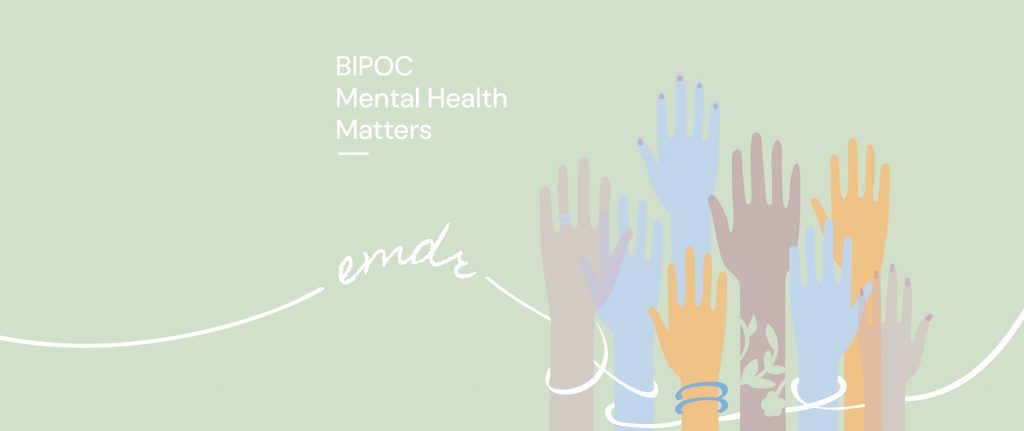Why It Matters—And What Therapists Can Do
Mental health care in the U.S. isn’t experienced equally.
While 56.1% of White adults with mental illness received care in 2022, that number dropped to 39.6% for Hispanic adults, 37.9% for Black adults, and 36.1% for Asian adults (SAMHSA, 2022).
These disparities are more than numbers—they reflect generations of systemic inequities, access barriers, cultural stigma, and historical distrust in the mental health system.
For EMDR therapists, cultural responsiveness isn’t an optional add-on—it’s foundational to ethical, effective care.
Whether you’re serving a client who’s experienced racial trauma, migration-related stress, or generational oppression, culturally attuned EMDR can make a meaningful difference. Below are actionable ways to bring cultural humility and responsiveness to your EMDR work with BIPOC clients.
1. Understand Trauma Through a Cultural and Systemic Lens
Trauma doesn’t exist in a vacuum. For BIPOC communities, it’s often compounded by racism, discrimination, immigration stressors, colonization, and other systemic forces.
A 2021 report from the U.S. Department of Health and Human Services (HHS) noted that “persistent systemic social inequities and discrimination” worsened mental health outcomes for people of color during the COVID-19 pandemic. For example, 40.3% of Hispanic adults experienced current depression, and 36.9% reported increased or new substance use, compared to 25.3% and 14.3%, respectively, among White adults (HHS, 2021).
What you can do:
- Integrate systemic and historical trauma into your case formulation.
- Name and validate the impact of racism and oppression in session when appropriate.
- Use EMDR’s Target Sequence Planning (Shapiro, 2018) to identify culturally relevant trauma experiences across the lifespan.
2. Start with Cultural Humility, Not Cultural Competence
“Cultural competence” implies mastery—something that’s never fully attainable. “Cultural humility,” by contrast, centers on a lifelong commitment to self-reflection, client-centered care, and collaborative learning (Tervalon & Murray-García, 1998).
What you can do:
- Reflect on your own social identities and how they show up in the therapy room.
- Let clients define what safety, healing, and connection mean to them.
- Be open to feedback—and willing to repair ruptures if cultural misattunements occur.
3. Adapt the EMDR Protocol—With Intention
The Standard EMDR Protocol is powerful—and flexible. It can and should be adapted to meet a client’s cultural, linguistic, and spiritual context.
What you can do:
- Adjust language, metaphors, and imagery to align with the client’s worldview.
- Use Group EMDR protocols—such as EMDR-IGTP—in collectivist cultures where community healing is valued (Jarero & Artigas, 2012).
- Integrate spiritual or ancestral resources during resourcing phases (Phase 2), honoring cultural and indigenous healing traditions.
4. Be Mindful of Access and Advocacy
BIPOC clients may face unique logistical and systemic barriers to accessing EMDR therapy: limited provider availability, language mismatches, financial constraints, or geographic distance from trained clinicians.
What you can do:
- Offer sliding scale options or refer to therapists who do.
- Direct clients to BIPOC-led EMDR directories and networks.
- Support advocacy efforts that expand access to EMDR for underrepresented communities.
5. Seek Ongoing Education and Diverse Supervision
Culturally responsive EMDR isn’t something we master in one workshop. It’s a relational, evolving process.
What you can do:
- Choose consultation and training that center anti-oppressive practices.
- Read and share work by BIPOC researchers, clinicians, and lived-experience experts.
- Stay informed on new EMDR applications for diverse populations and presentations.
Final Thoughts
EMDR therapy holds immense potential to help BIPOC clients heal from trauma—but only if we meet them with attuned, culturally responsive care.
By committing to cultural humility, adapting protocols, and advocating for equity, we move closer to trauma treatment that is not only effective—but just.
References
- Jarero, I., & Artigas, L. (2012). The EMDR Integrative Group Treatment Protocol (EMDR-IGTP). Journal of EMDR Practice & Research, 6(2), 57–72. https://www.efpe.fr/assets/6.-jarero—artigas%2C-l.-%282012%29.-the-emdr-integrative-group-treatment-protocol–emdr-group-treatment-for-early-intervention-following-critical-incidents.pdf?
- SAMHSA. (2022). Mental Health Treatment Among U.S. Adults with Any Mental Illness (AMI). National Institute of Mental Health. https://www.nimh.nih.gov/health/statistics/mental-illness
- Shapiro, F. (2018). Eye Movement Desensitization and Reprocessing (EMDR) Therapy: Basic Principles, Protocols, and Procedures (3rd ed.). Guilford Press.
- Tervalon, M., & Murray-García, J. (1998). Cultural humility versus cultural competence: A critical distinction in defining physician training outcomes in multicultural education. Journal of Health Care for the Poor and Underserved, 9(2), 117–125. https://pubmed.ncbi.nlm.nih.gov/10073197/
- U.S. Department of Health and Human Services (HHS). (2021). Racial and Ethnic Disparities in the Prevalence of Stress and Worry, Mental Health Conditions, and Increased Substance Use Among Adults During the COVID‑19 Pandemic. Morbidity and Mortality Weekly Report (MMWR), 70(5), 162–166. https://www.cdc.gov/mmwr/mmwr_wk.html


